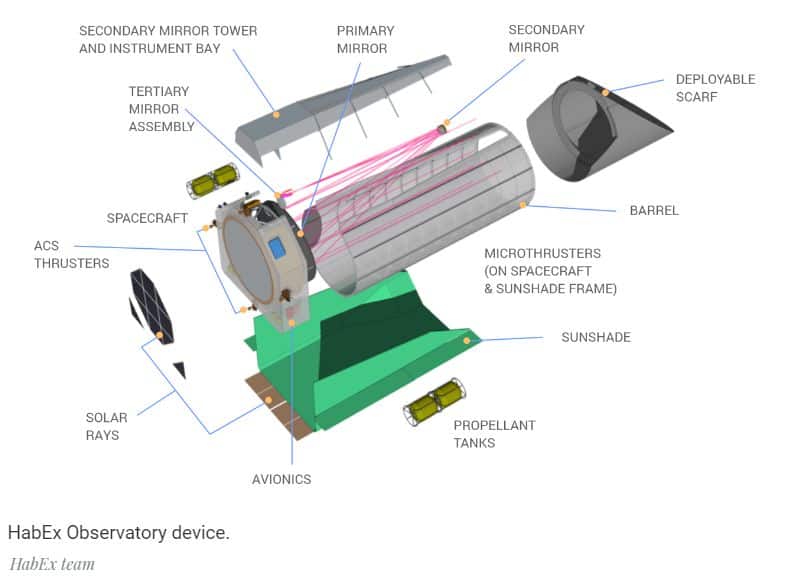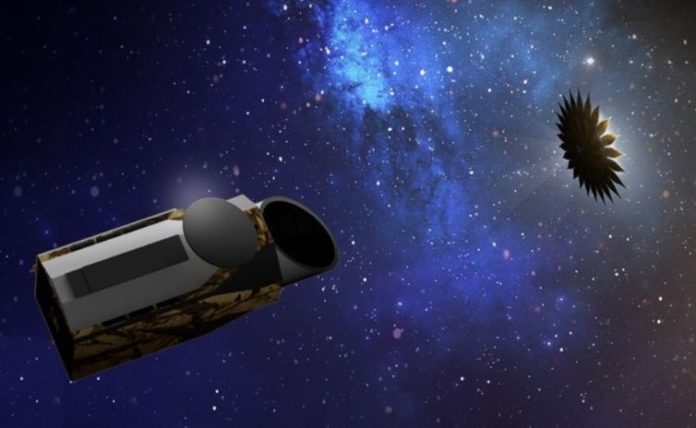NASA has completed the preliminary design of the new HabEx Space Observatory. If the project receives funding, then in 2030 a telescope and a folding shield in the form of a flower will be launched into space. Such a system will make it possible to obtain direct images of exoplanetary systems and to study the atmospheres of exoplanets close to the Sun, according to the website of Ohio State University.
The HabEx program (The Habitable Exoplanet Observatory) was launched in 2016 and is one of four projects proposed by NASA as the new “Big Observatory”. As part of the project, a telescope with a diameter of the main mirror of 4 meters will be launched into orbit around the second Lagrange point in the Sun-Earth system, which is almost two times the diameter of the main mirror of the Hubble telescope. The new telescope will take direct images of about 110 exoplanetary systems close to the Sun, containing stars similar to our star. For this task, separately from the telescope, a 52-meter shield will be put into space when folded, which, once it is 77 thousand kilometres from the telescope, will open like a flower. The shield will have to block the light from the host star in order to increase the amount of light received by the telescope from the planets themselves.

In addition, the telescope will be equipped with a set of spectrometric equipment and a coronograph for studying the atmospheres of exoplanets in the optical, ultraviolet and near infrared ranges. In particular, the observatory will look for signs of water vapor and biomarkers, such as molecular oxygen, ozone, methane, as well as CO2, CO and O4, which will establish the possibility of nucleation of life on these exoplanets. The characteristics of scientific instruments will also allow the telescope to study the evolution of stars in galaxies and in the field of cosmology.

If the project is approved, then it will receive funding by 2021, and the launch of the telescope into space will take place no earlier than 2030. The current cost of the project, designed for ten years of work, is seven billion dollars. According to scientists, it will require international cooperation between universities and enterprises.
